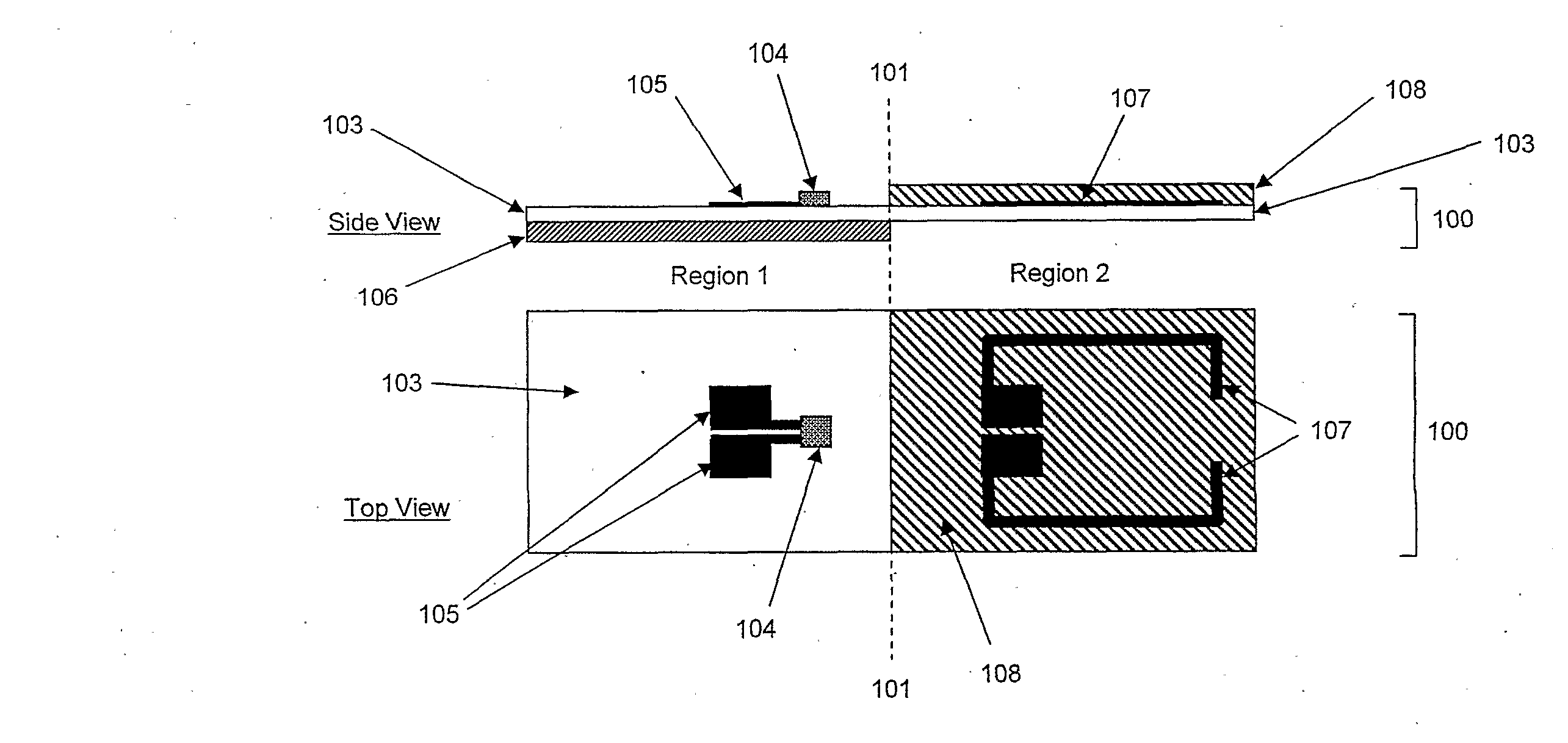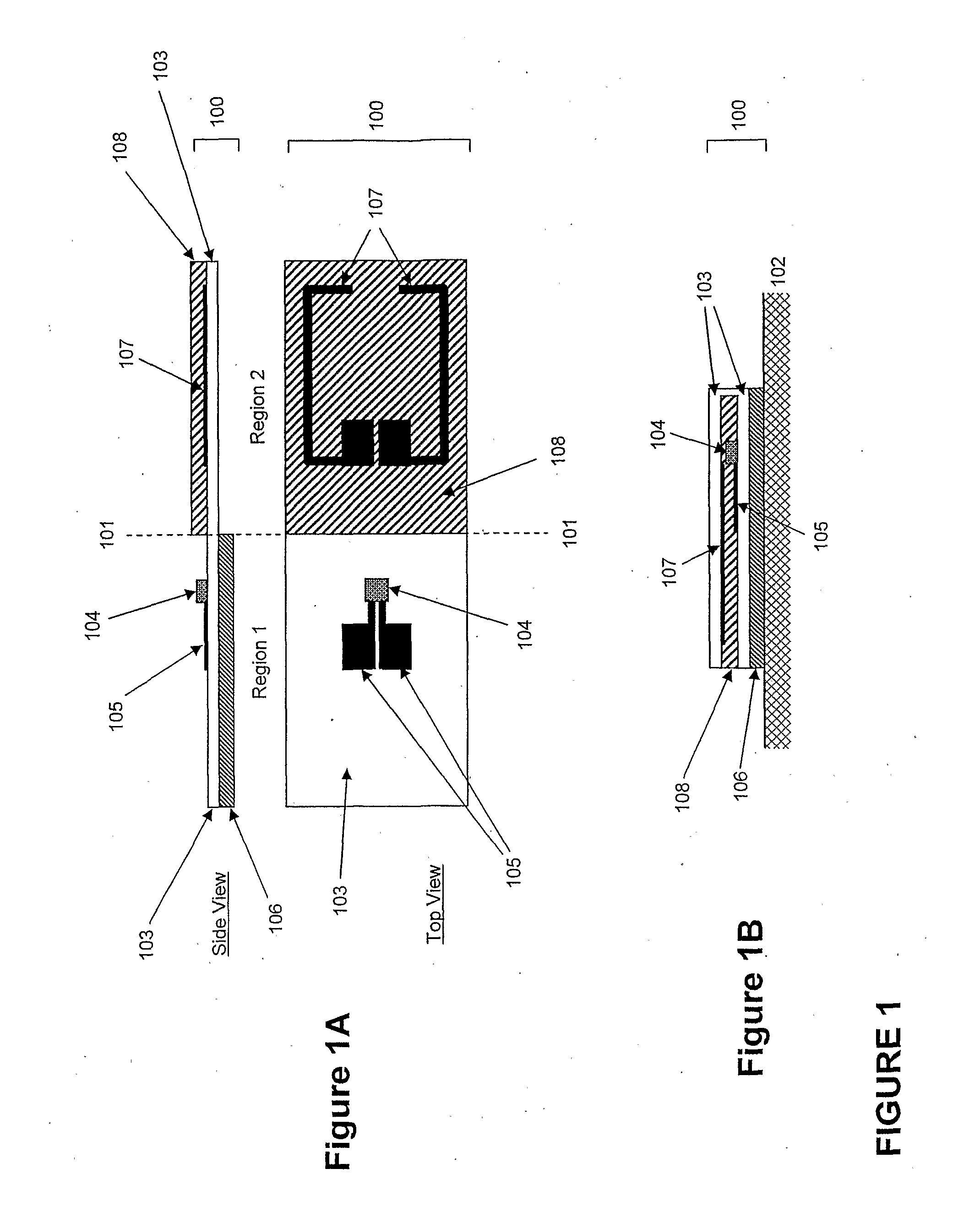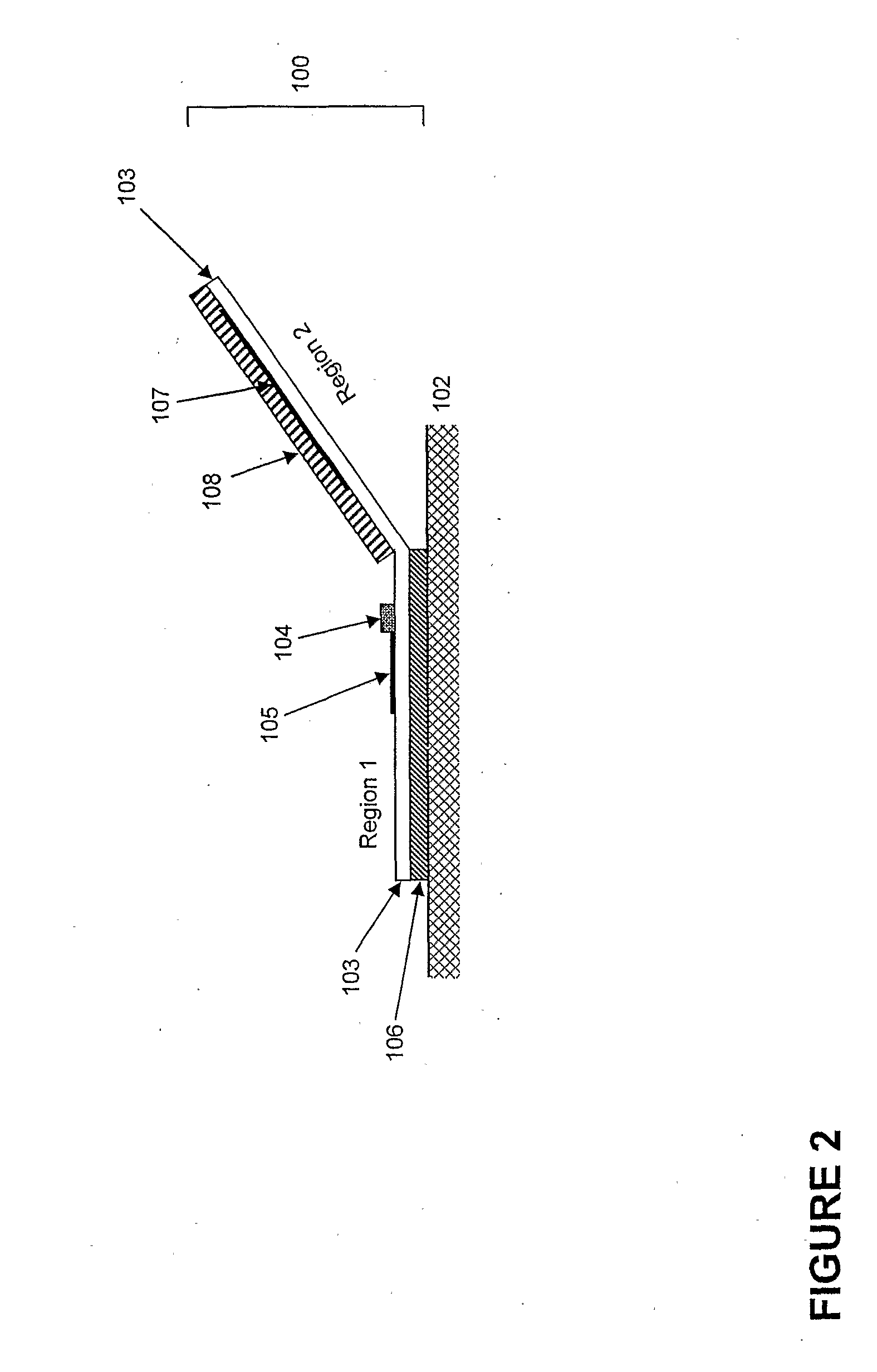Radio frequency identification tag with privacy and security capabilities
a technology of privacy and security, which is applied in the field of radio frequency identification tags with privacy and security capabilities, can solve the problems of violating the privacy rights of consumers, unable to use the rfid tag to identify stores, and the privacy of consumers using the rfid tag on consumer goods
- Summary
- Abstract
- Description
- Claims
- Application Information
AI Technical Summary
Benefits of technology
Problems solved by technology
Method used
Image
Examples
Embodiment Construction
[0032]The present invention will now be described by way of non-limiting example with reference to the embodiments illustrated schematically in FIGS. 1 to 5.
[0033]FIG. 1 is a schematic illustration of an RFID tag that is the subject of the present invention.
[0034]The RFID tag 100 of FIG. 1 is produced initially in the form of a flat rectangular tag having a longitudinal axis, as shown in FIG. 1A. The flat tag of FIG. 1A is folded along a fold line 101 that is transverse of the longitudinal axis into the folded configuration of FIG. 1B that is applied to a surface 102.
[0035]The fold line 101 divides the RFID tag into two regions—region 1 and region 2—as illustrated in FIG. 1A. Regions 1 and 2 do not need to be the same size and shape.
[0036]The preferred embodiment of FIG. 1 is described and illustrated in relation to an RFID tag that incorporates a radio frequency (RF) antenna to enable communication with a remote RFID reading device. It should be appreciated that the antenna design ...
PUM
 Login to View More
Login to View More Abstract
Description
Claims
Application Information
 Login to View More
Login to View More - R&D
- Intellectual Property
- Life Sciences
- Materials
- Tech Scout
- Unparalleled Data Quality
- Higher Quality Content
- 60% Fewer Hallucinations
Browse by: Latest US Patents, China's latest patents, Technical Efficacy Thesaurus, Application Domain, Technology Topic, Popular Technical Reports.
© 2025 PatSnap. All rights reserved.Legal|Privacy policy|Modern Slavery Act Transparency Statement|Sitemap|About US| Contact US: help@patsnap.com



